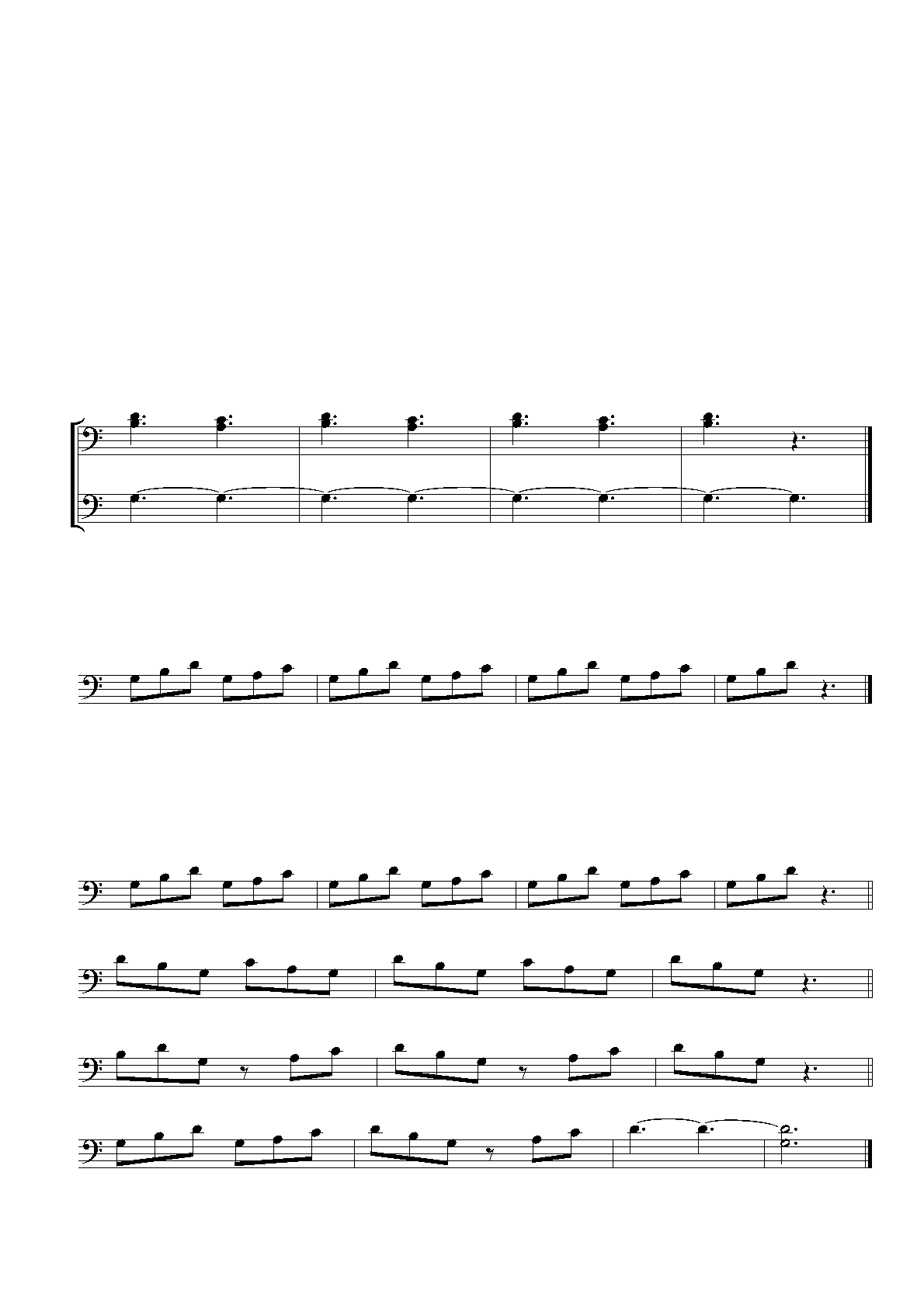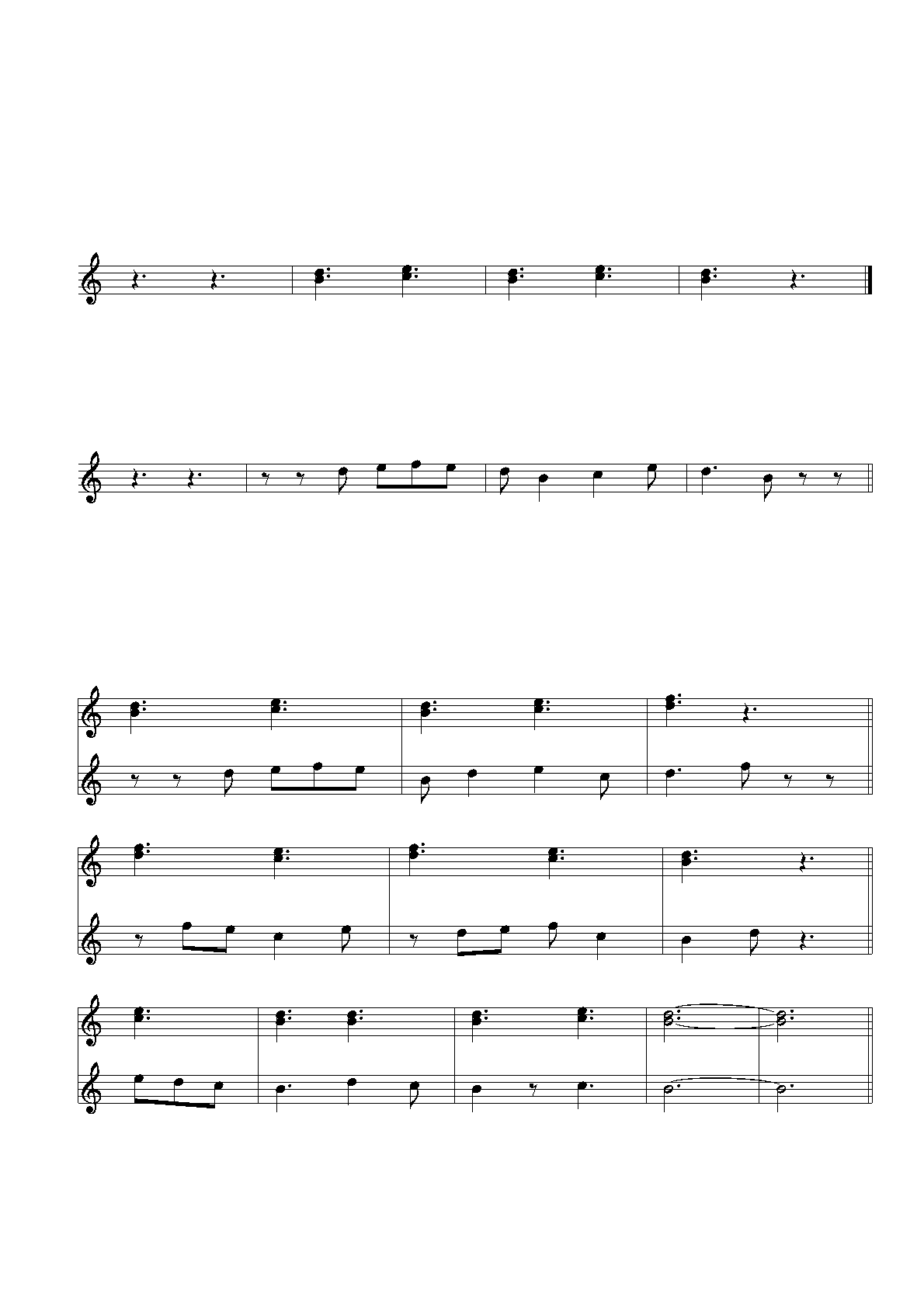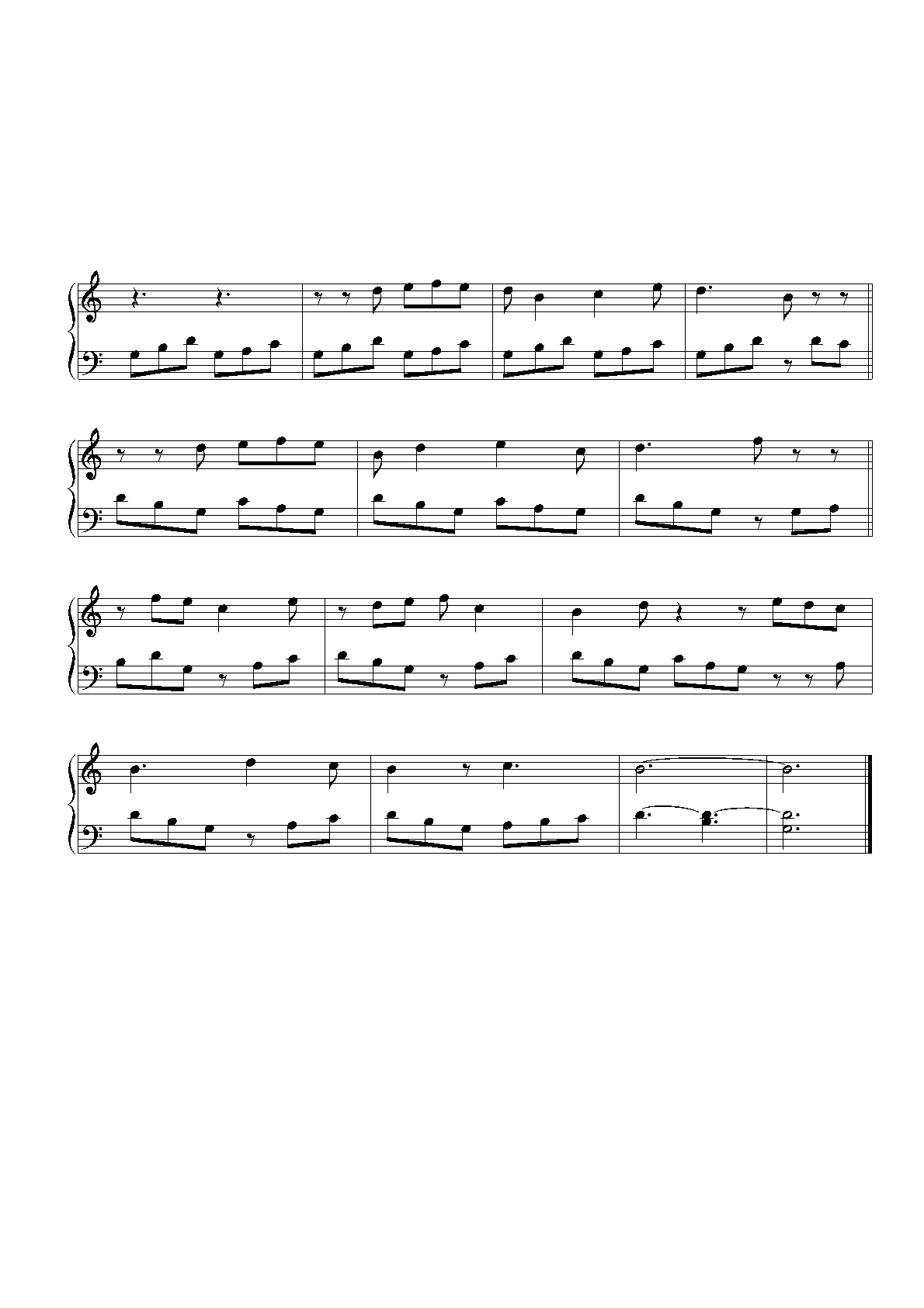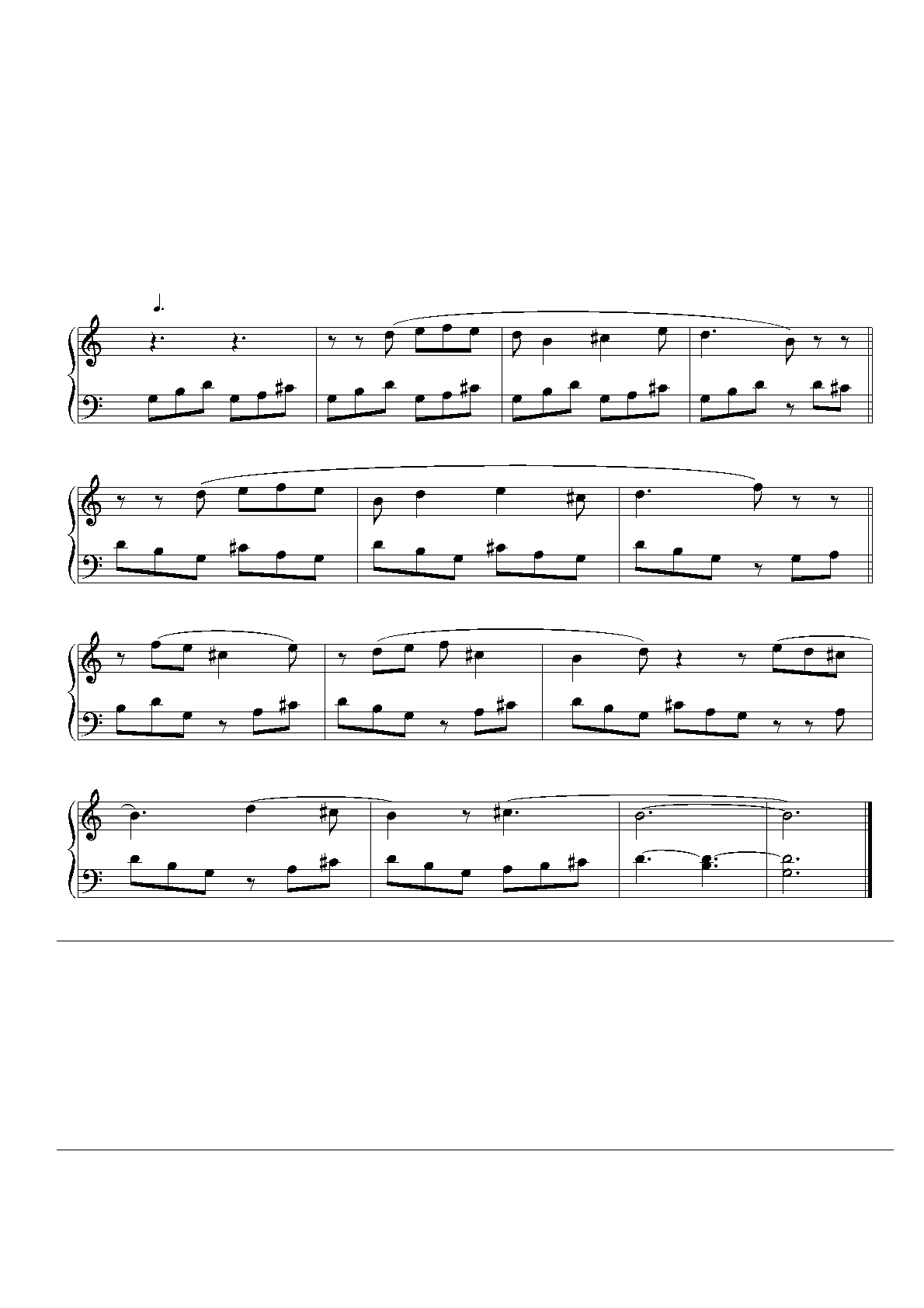
2010 Reinier Maliepaard: Recomposing Bartok's Mikrokosmos no. 41
www.bestmusicteacher.com
1
Recomposing Bartok's Mikrokosmos no. 41
Objective: deriving melody (right hand) and accompaniment (left hand) from an easy progression
of thirds.
Bartok's Mikrokosmos no. 41 can be seen as a varied repetition of the first 4-bar phrase.
Step 1: the basic structure of the first 4-bar phrase (lower voice) is a sustained voice G and a third
B-D which is repeated and elaborated by the lower third A-C
Phrase 1
8
6
8
6
Step 2: phrase 1 with 'broken chords' as texture for the accompaniment
8
6
Step 3: phrase 2, 3 and 4 are built with permutations of the 'broken chords' from step 2
Condition: insert a rest in case of note repetition (cf. phrase 3 and 4)
Phrase 1
8
6
Phrase 2
Phrase 3
Phrase 4

2010 Reinier Maliepaard: Recomposing Bartok's Mikrokosmos no. 41
www.bestmusicteacher.com
2
Step 4: the basic structure of the first 4-bar phrase (upper voice) is a third B-D which is
repeated and elaborated by the upper third C-E
8
6
Step 5: a melody can be derived from this basic structure by switching from the upper interval tone
to the lower interval tone and vice versa. Bartók's solution is as follows:
Phrase 1
x
8
6
Step 6: the melody of phrases 2 and 3 can be seen as derived from an expanded basic structure (cf. x).
The melody of phrase 4 is built in the same way as the melody of phrase 1.
Again, the melodies are composed by switching from the upper interval tone to the lower
interval tone and vice versa. Bartók's solution for the phrases 2, 3 and 4 is as follows:
Structure phrase 2
Phrase 2
x
8
6
8
6
Structure phrase 3
x
Phrase 3
x
8
6
8
6
Structure phrase 4
Phrase 4
8
6
8
6

2010 Reinier Maliepaard: Recomposing Bartok's Mikrokosmos no. 41
www.bestmusicteacher.com
3
Step 7: combining all the above results in a composition that is more or less equivalent to Bartók's
solution. The main difference relates to bar 10: a modification of a 6/8 bar into a 9/8 bar.
Some accompaniment figures are modified, however in a slight way (cf. x).
x
x
8
6
8
6
5
x
x
8
x
x
x
x
8
9
8
9
11
x
x
x
x
8
6
8
6

2010 Reinier Maliepaard: Recomposing Bartok's Mikrokosmos no. 41
www.bestmusicteacher.com
4
Step 8: finishing touch (adding dynamics, tempo, phrasing and notes on performance)
The most unexpected modification of Bartók is the raise of the fourth note of
the mixolydian scale from C to C-sharp. Similar modifications of church modes
can be often found in Bartók's oeuvre.
Adagio
= 44
sempre legato
8
6
8
6
p
5
8
8
9
8
9
11
8
6
8
6
About the author:
Reinier Maliepaard, psychologist, software engineer, organist and teacher at the ArtEZ Conservatorium Netherlands (music theory and music history).
Maliepaard maintains several internetsites as www.bestmusicteacher.com en www.artezmusictools.nl.
His freeware music notation programm MC Musiceditor (Windows) can be downloaded at www.mcmusiceditor.com
The original PDF-article has been typeset with MC Musiceditor 6.0.6 (www.mcmusiceditor.com - www.bestmusicteacher.com). The HTML-version is a
conversion from the original PDF-file, using the free PdfEdit995 (http://www.pdf995.com)




